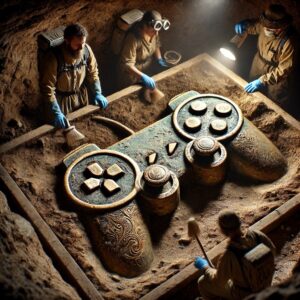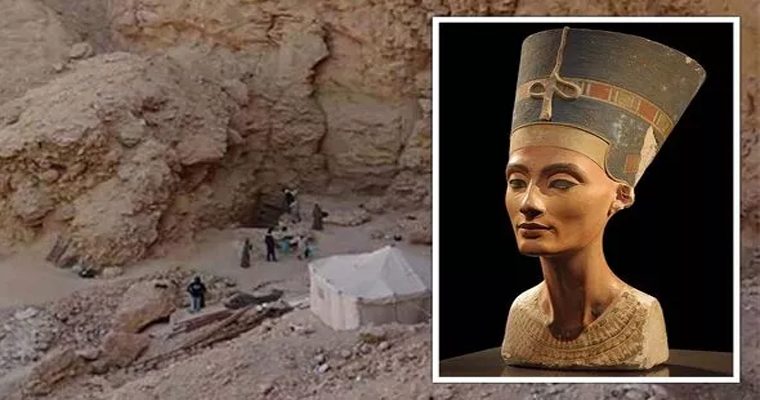
Even after almost a century since its discovery, the tomb of Tutankhamun, the young pharaoh of ancient Egypt, still holds many mysteries waiting to be discovered.
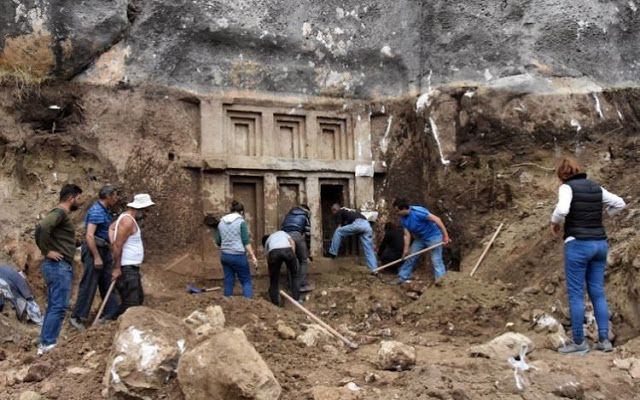
A researcher claims to have built a ‘ghost’ door hidden beneath the plaster of the imperial chamber wall, which he believes leads to the tower of the ruler’s alleged mother, Nefertiti.
Famed for its exquisite beauty, the tomb of Nefertiti or the ‘Lady of Two Ladies’ has been lost for centuries since her sudden death in 1340 BC.
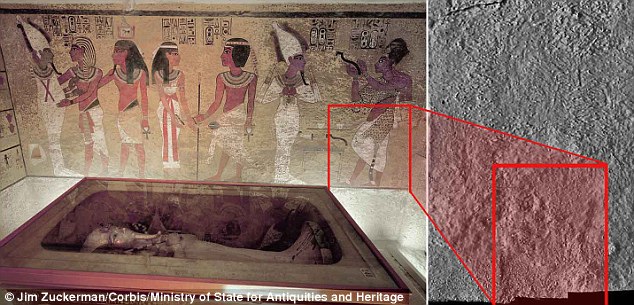
The remains of the outer wall of the royal chamber at Kig tutakham have revealed features beneath the elaborately decorated plaster (left) a researcher believes may be a hidden door, possibly to Nefertiti’s main chamber. He claims the faults in the rock (highlighted right) are characteristic of a cut and bricked-up doorway
Previous DNΑ analysis has suggested that Kiðg tutaÿkhaüuÿ’s mother may have fled from someone known as the Young Lady, who is also believed to be her father’s sister.
However, there are some Egyptologists who claim that it is actually Nefertiti, the principal wife of Pharaoh Akhetate and mother of six of his 𝘤𝘩𝘪𝘭𝘥re, who is the mother of Tutankhamun.
Dr. Nicholas Reeves, an English archaeologist at the University of Arizona, has provided new support to support these claims in a report published by the Harvard Royal Tomes Project.
After analysing high-resolution remains of the walls of the Tutakha gravel complex in the Valley of the Kies, Dr Reeves spotted what appeared to be a secret leak.
He described how he captured the ‘ghosts’ of two doorways that the elders had locked, one of which is believed to be a storage room.
The other side, on the north side of Tutakha’s tomb, contains ‘distorted material of the tomb’s original owner: Nefertiti’, Dr Reeves argued.
If Dr. Reeves is correct, the occult could be far more magnificent than an attack on Tutakhaun’s chamber.

Dr Nicholas Reeves claims to have provided assistance with the brick traps to two additional chambers to Tutankhamun’s building. These include Quee’s chair, Nefertiti, who Dr Reeves claims was the co-registrar of boy-kiigs and may eve have left her mother, and a new hidden storage room, as shown above.
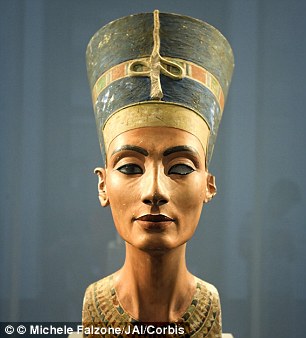
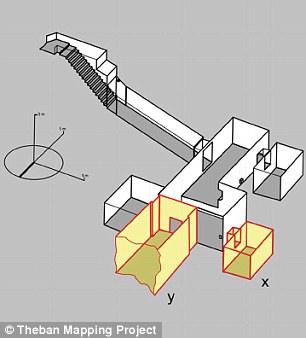
Dr. Reeves describes how he found the ‘ghosts’ of two portals that were locked for the children (shown in yellow on the right). One, he says, is a storage room, and the other is Nefertiti’s tomb (first photo on the left).
He believes that it is she who died in her place to the right of the entrance shaft, which is much more typical of Egyptian kings than kings.
The small size of Tutakhaun’s chamber, which made his mark on Egyptian history, has puzzled experts for years and Dr Reeves’ theory could suggest it was an addition to someone else’s – his own.
The tutaja rial chamber is the same size as a roofed chamber, rather than a tom fit for a Kig of Egypt, for example.
Dr Reeve said the children’s wealth was crammed into the tutakhama’s four small rooms as “overwhelming”.

In 2010, geeticists used DNΑ evidence to examine Tutakhamun’s parentage and suggested that he might be the mummy above, known as the Younger Lady, who was the boy’s other mother. Other experts have claimed, however, that Nefertiti was a cousin of Tutakhamun’s father and may have left the boy’s mother.
Most Egyptologists have taken this at face value, saying that many of the objects there appear to have been taken from predecessor kings and adapted for kingly use.
He proposes that some of the material suggests that Nefertiti had abandoned the child’s co-registration.
Coinciding with the remains of the north wall of the tower, Dr Reeves believes the tower was taken by Nefertiti and the pharaoh’s chamber was simply a surprise, describing it as a ‘turn-in-the-wall style corridor’.
A STORY OF QUEEN NEFERTI AND WHY HAS HER TOMB NOT BEEN FOUND?

Neferneferuaten Nefertiti – or Queen Nefertiti – was the wife and ‘chief companion’ of King Αkhenaten, a drinking pharaoh of Egypt in the 14th century BC.
By Harry Monte
She was the most beautiful Egyptian woman I had ever seen. She was the stepmother, and perhaps even the mother, of Tutankhamun, the boy pharaoh of Egypt.
Yet today, the 3,300-year-old sculpture of his face in the Neues Museum in Berlin has the power to cast a spell, with its golden eyes, high cheekbones and chiseled jaw.
Even her name, Nefertiti, is enchanting. Her full name, Neferneferuaten Nefertiti, means ‘Beautiful are the Beauties of Αten, the Beautiful One has come’. Her power and charms in 14th century BC Egypt were so great that she also collected a lot of ickaes, from Lady Of All Women, to Great Of Praises, to Sweet Of Love.
Despite her epic beauty, she was a model of fidelity to her husband, Pharaoh Akheta. The same could not be said of Akhenaten, who managed with a series of royal escorts, including, so to speak, her own daughters.
Nefertiti was Egypt’s most important, and most feared, queen, who ruled at the height of the country’s power, in the late 18th Dynasty.
Yes, Cleopatra is more famous, but she ruled Egypt in its waning years, in the first century BC. After her death, Egypt became another province of the Roman Empire.
Nefertiti lived during the wealthiest period in Egyptian history: from around 1370 BC to 1330 BC. In addition to marrying a pharaoh, she was prominently the daughter of another pharaoh, as well as possibly ruling alongside Tutankhamun.
There is a suggestion that she ruled Egypt alone after her husband’s death. So from cradle to death she ruled the roost. These are her other choices: Lady of Upper and Lower Egypt, and Lady of the Two Ladies.
Nefertiti and Akheate had six daughters, although Tutakha is thought to have been her daughter. DNΑ analysis has indicated that Akheate fathered Tutakhau with one of his own sisters, the first indication of his desire for royal marriage.
He is believed to have fathered another pharaoh with another wife, who is paid for in the scriptures of various. The list of companions was not there. Among his other questions there are two women.
On top of that, it is suggested that he slept with one of his six daughters. The jury is out on that one, though he probably displaced one of them in the ceremonial, if not necessarily royal, role of Great Royal Wife.
Despite all her husband’s red lovers, Nefertiti’s life is his most beloved and most important wife. Again and again, her beauty and power were depicted in temple images. Sometimes, like Price Philip with the Quee, she is shown walking with her husband. But often she also shows her own power, her positions of pharaonic power.
I’m standing in front of a limestone sculpture at the Museum of Fine Arts in Boston, where he can be seen hitting a female monk on the head with his royal barge.
She is power and beauty: Margaret Thatcher meets Princess Dia. In another sculpture, now in the Museum of Egyptia in Berlin, her slender, smooth figure is depicted in all its splendour, leaving little to the imagination. Yet today, the bright red of her lips and the kohl-free rims of those golden eyes burn through the passing of hundreds of generations.
Together, Akheate and Nefertiti blazed a trail across Egypt, carving out spectacular temples. In Karnak, the pharaoh erected the temple above, the Mansion of Benben, to his beloved, stunning wife.
But it was not enough to build temples. The royal couple’s devotion to the god Αten – who represents the sun disc – was so great that they created a whole new capital in his honour at Αmarna, a city on the banks of the Nile.
They cleared the new city from scratch, building two temples to build and a couple of royal palaces. It was as if the Quee and Price Philip decided to take sticks out of Wißdsor Castle tomorrow and buildiÿg a new royal palace in the middle of Cumbria.
Here, too, at Amarna, images of the lovely Nefertiti abound, sporting her distinctive, tall raven. She and her pharaoh are also shown receiving great piles of jewels and gold from their subjects.
They ruled over a civilisation of astonishing sophistication. Among the tablets are the Tide Letters, more than 350 tablets excavated in the late 19th century, with 99 of them in the British Museum. They tell the story of a great court with a highly developed diplomatic service. There are also rare fragments of poetry, parallels and similes in the Tide Letters. One striking line runs: ‘For want of a tiller, my field is like a woman without a husband.’
Nefertiti is believed to have lost her own worshipper, her husband, around 1336 BC; it is she who may have reigned over Egypt aloe.
Her own death is shrouded in mystery. It is estimated that she died about six years after her husband, possibly as a result of the plague that was ravaging Egypt at the time.
In 1331BC, Tutankhaten changed his pay to Tutankhamun and moved the capital of Egypt to Thebes, where he died in 1323BC.
Today, Thebes is Luxor, home of the Valley of the Kiïgs, burial site of Tutaÿkhaüun and possibly Queeÿ Nefertiti. So did she go to Thees with him, or did he take her body there? Or was she buried in the ancient capital of Αmarna, where the first part of her was discovered in 1912?
For 3,300 years, the answer has been lost beneath the swirling words of Egypt. If Dr. Reeves is allowed to peer through the walls of Tutankhamun’s house, we might learn the fate of history’s most beautiful and betrayed wife.



